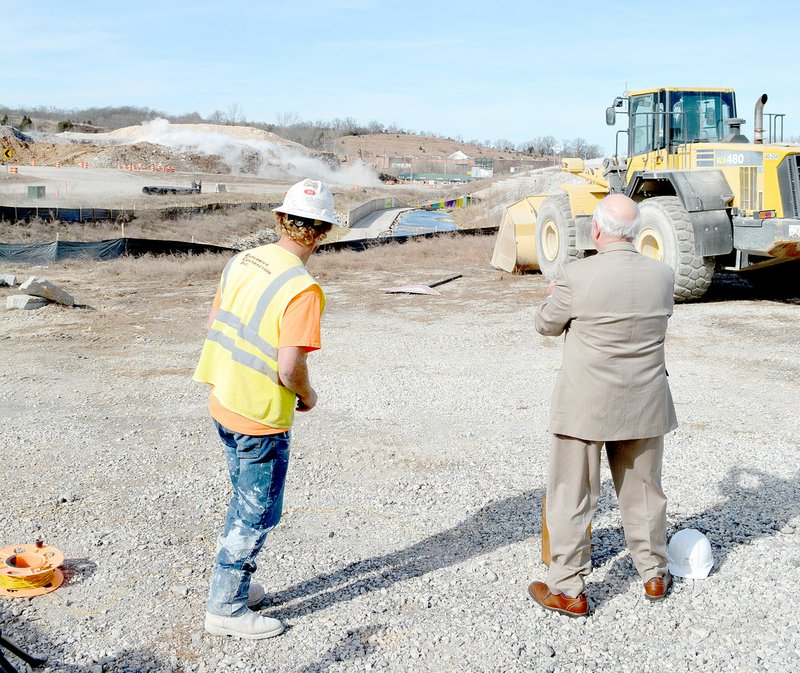Mayor Peter Christie lined up with both hands on the plunger, giving it a firm shove and setting off a handful of charges that turned a hillside into a pile of debris.
"It was amazing," he said.
ARDOT construction project coordinator Brian Powell said the earthwork alongside the future interchange and current traffic circle that allows access between U.S. Highway 71, Arkansas Highway 549, Interstate 49 and Walton Boulevard is one of the toughest parts of building the Bella Vista Bypass.
The difficulty is in no small part because it's a very high-traffic area and the volume of earth to be moved is massive, he said.
"We got 700,000 more yards of dirt we've got to move," he said.
That's out of a total of 920,000 yards of dirt that need to be moved, he explained. There's another 60,000 yards of rock that still need to be moved, out of a total of 90,000, he added.
The end result will be transformative, he said, noting the landscape will be wildly different once this project is finished and is currently changing on a daily basis.
"You won't ever remember a roundabout," he said.
Zack Brisco, a blaster with Explosive Contractors, Inc., said he set up the charges the mayor detonated.
It's a team effort, he said -- drillers get core samples that are used to determine how deep to lay charges and how strong they should be.
"We have to go in there and lay our a grid," he said. "We'll load them to go off in a series."
Before any blasting is done everyone makes sure the site is clear, he explained, and the different crews all coordinate.
Workers put in almost two days of work before each detonation, he said.
"You work hard all day to watch a few milliseconds go off," Brisco said.
The blasting is designed to go off in a specific direction, ensuring that everything moves as safely as possible, he explained, and crews are staged to pick up the debris as soon as the dust clears.
Typically, he said, the roads can be opened up within 10 to 15 minutes after blasting.
Brisco said workers make sure to blast relatively small patches at a time to keep these closures short.
"Hope this whole job goes smooth. We'll try our best at it," he said.
General News on 01/15/2020

